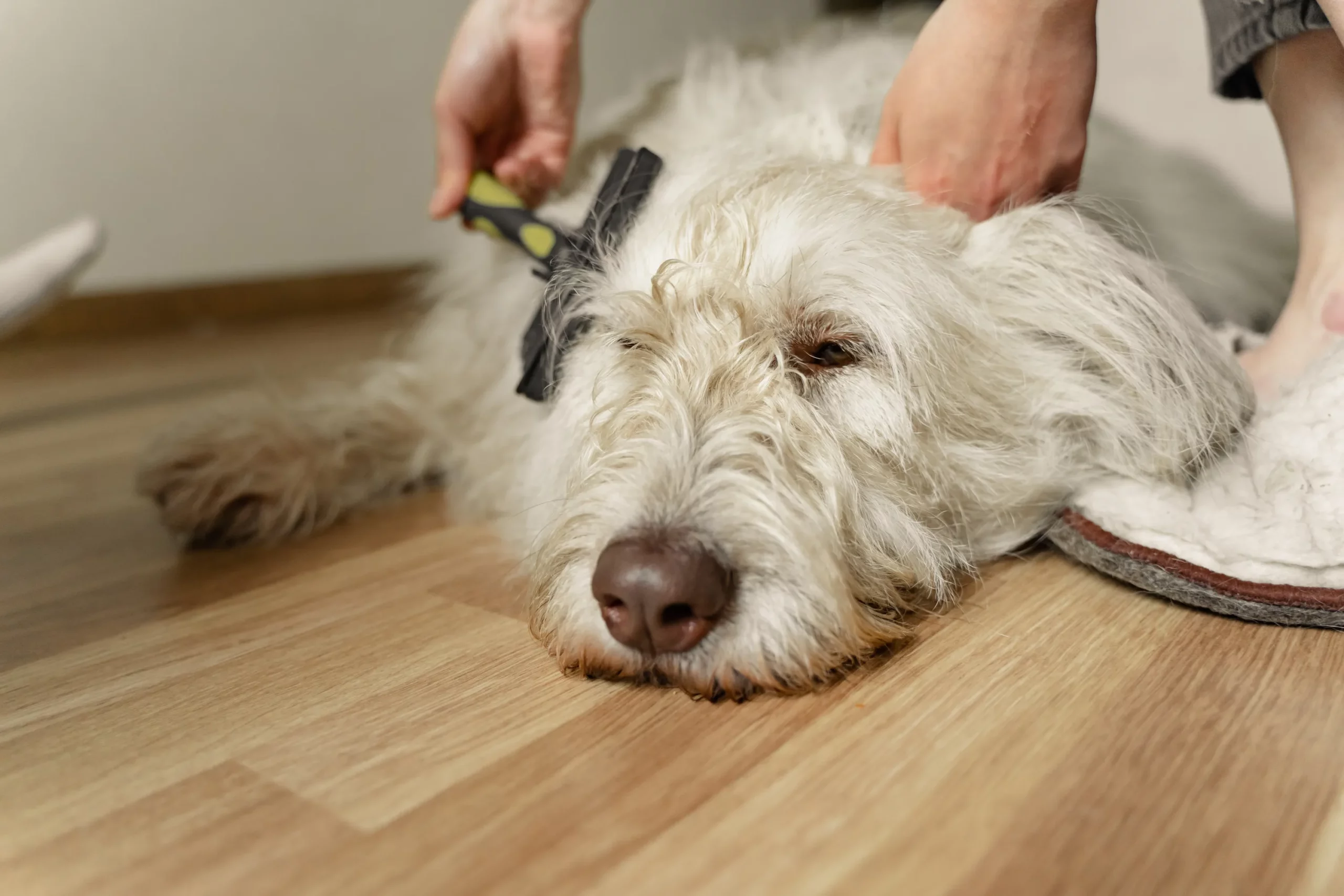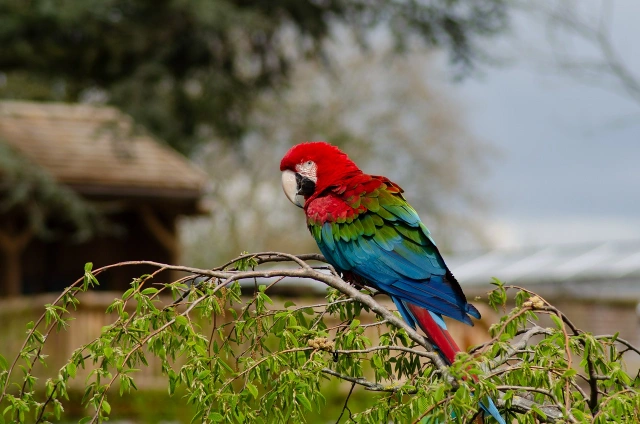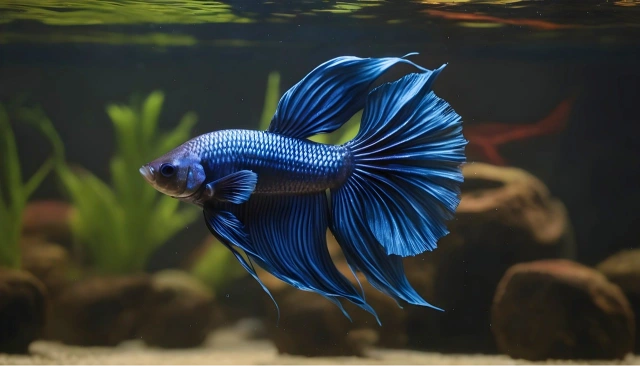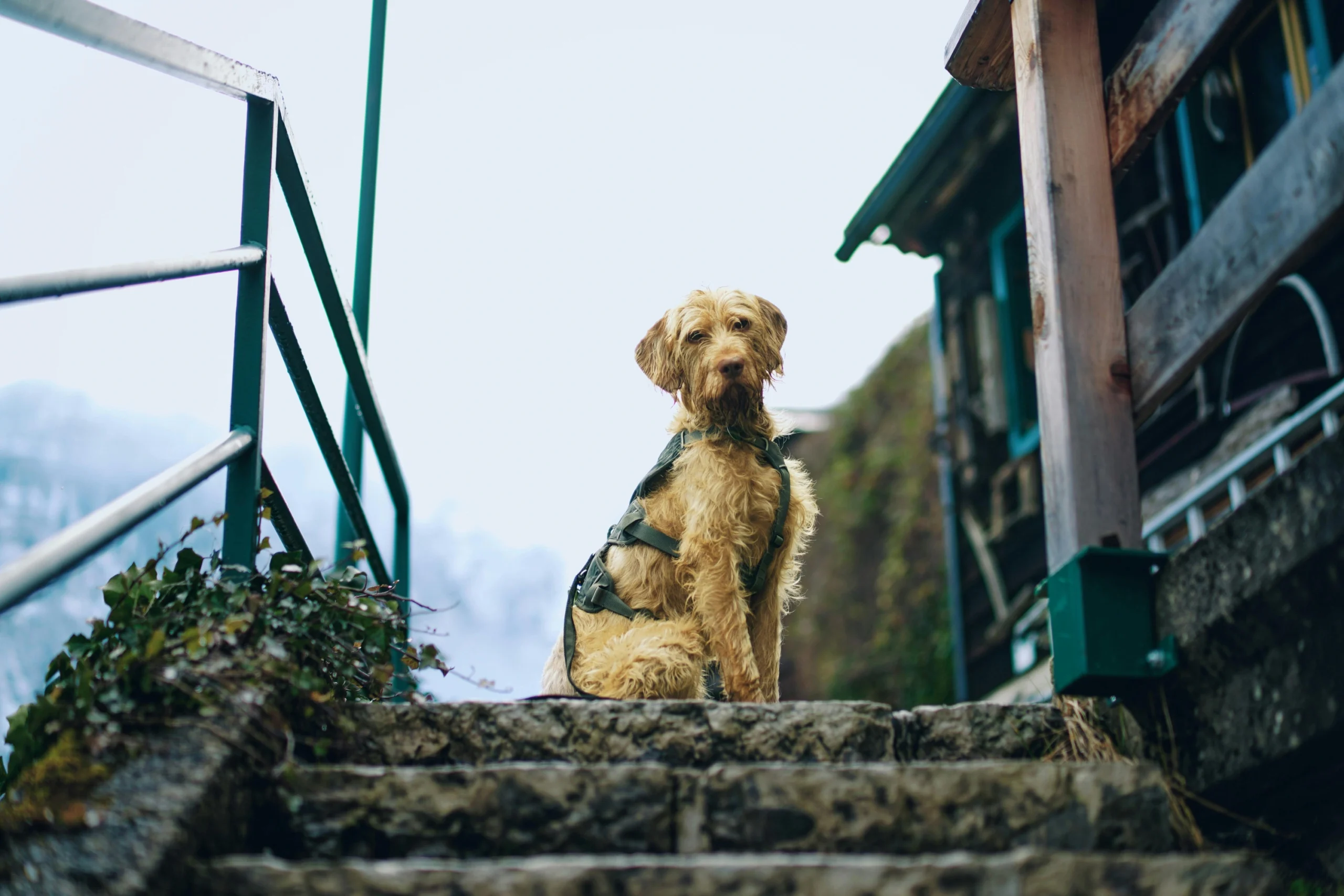Table of Contents
ToggleAs a pet trainer, I understand how important grooming is to a pet’s overall health and well-being. Grooming a pet keeps its coat clean and shiny and helps maintain and prevent skin conditions.
If your dog has fleas, you should treat the flea infestation before grooming your dog. This article will explain why treating your dog for fleas before grooming is critical and what steps to take to ensure your dog’s health and safety.
Why You Shouldn’t Groom a Flea-Infested Dog
When you take your dog to the groomer, the fleas on your dog may jump onto the grooming equipment or other dogs in the grooming facility.
This can spread flea infestation and make control more difficult. Furthermore, grooming can make fleas more active, making it more difficult to get rid of them.
If you groom your dog before treating the flea infestation, the fleas will breed and multiply in your home, leading to an even larger infestation. The grooming process can also make fleas more active, making it more difficult to control them.
Flea Treatment for Your Dog
As a veterinarian, I am frequently asked by pet owners about the best ways to prevent and treat fleas on their dogs.
Fleas are one of the most common parasites that affect dogs. If left untreated, they can cause skin irritation, allergic reactions, anemia, and even the transmission of other parasites, such as tapeworms.
Fortunately, numerous effective flea treatments for dogs can help keep them healthy and flea-free. In this article, I’ll review some of the most common flea treatments for dogs and give you some tips on picking the best one for your pet.
Shampoos for Fleas
One of the most popular and widely used flea treatments for dogs is flea shampoo. These shampoos contain flea-killing ingredients and can help soothe any skin irritation caused by flea bites.
Flea shampoos are simple and can be a good option for dogs who enjoy baths. They are not, however, a long-term solution and will only kill the fleas present on the dog at the time of the bath. To avoid negative reactions, it is critical to use a flea shampoo specifically designed for dogs and carefully follow the instructions.
Collars for Fleas
Another popular option for flea prevention and treatment in dogs is flea collars. Insecticides in these collars repel fleas and kill any that come into contact with the collar.
Flea collars are an excellent choice for dogs who spend much time outside or in areas where fleas are common. However, it is critical to select a safe flea collar for your dog and carefully follow the instructions.
Because some flea collars can irritate the skin or cause allergic reactions, monitoring your dog when using a flea collar closely is critical.
Sprays for Fleas
Flea sprays are a popular treatment option for dogs because they are simple and effective for several months.
These sprays contain flea-killing insecticides and can be applied directly to your dog’s fur. Flea sprays are a good option for dogs who are difficult to bathe or allergic to flea collars.
To avoid negative reactions, choose a flea spray specifically designed for dogs and carefully follow the instructions.
Topical Treatments
Topical flea treatments are a popular choice for dog flea prevention and treatment. These treatments are applied to your dog’s skin and contain insecticides that kill fleas while preventing them from returning.
Topical treatments can benefit dogs with many furs or who are difficult to bathe. However, selecting a safe topical treatment for your dog is critical, and carefully following the instructions is critical.
Some topical treatments can irritate the skin or cause allergic reactions, so monitoring your dog when using one closely is critical.
Another option for flea prevention and treatment in dogs is oral medications. These medications are administered orally to your dog and contain ingredients that prevent flea reproduction or kill adult fleas.
Oral medications can be a good option for dogs that are difficult to treat with topical treatments or have a lot of furs.
However, selecting an oral medication that is safe for your dog and carefully following the instructions is critical.
Because some oral medications can cause side effects, monitoring your dog when using one closely is critical.
Preparing Your Dog for Grooming
I’d gladly give you some pointers on preparing your dog for grooming!
Begin early
It’s critical to start getting your dog used to being touched and handled at a young age. Brushing their fur, checking their ears and paws, and gently handling their tail are all examples.
Use positive reinforcement techniques, such as treats and praise, to help your dog associate grooming with pleasant experiences. Reward them for letting you touch and manipulate them.
Gradually introduce grooming tools
Begin by gently introducing your dog to grooming tools such as brushes and clippers. Allow them to inspect and sniff the tools before using them on your dog.
Make your dog feel at ease in the grooming area
Allow your dog to explore the grooming area, sniff around, and become acquainted with the surroundings. Reward them with treats for remaining calm and relaxed.
Handling and grooming should be done in short sessions, gradually increasing the amount of time as your dog becomes more comfortable. Brushing their fur, clipping their nails, and cleaning their ears are all examples.
Use a gentle approach
When grooming your dog, always use a gentle, patient approach. Throughout the process, speak softly to them and provide treats and praise.
Regular grooming appointments can help your dog become accustomed to grooming and keep them looking and feeling their best.
Remember that every dog is unique, and getting your dog used to grooming may take some time and patience. Consistency and positive reinforcement are essential, and always keep your dog’s comfort and well-being in mind.
Pre-Grooming Activity Ideas.
Bring your pup for a short walk or fetch game before beginning grooming procedures. Ensure they are not too exhausted to minimize squirming or resistance during grooming sessions.
Conclusion
Finally, treating your dog’s fleas before having them groomed is critical. Fleas spread easily to other pets and the grooming salon, resulting in a larger infestation.
Grooming can also aggravate flea bites and make your pet uncomfortable. Before scheduling a grooming appointment, consult your veterinarian about appropriate flea treatment.
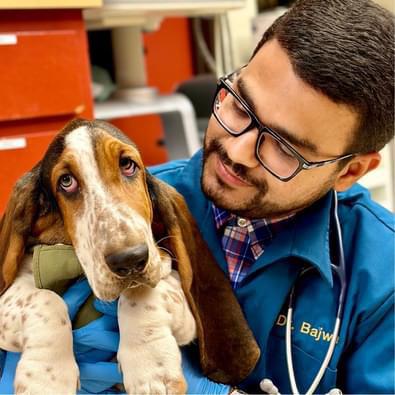
Dr. Usman Bajwa, a dedicated veterinarian with a passion for pets, brings years of expertise to the world of pet grooming. Through his blog, he shares valuable insights and practical tips to help pet owners provide the best care for their furry companions. With a focus on promoting the health and happiness of pets, Dr. Usman articles offer easy-to-follow guidance on grooming techniques. When he’s not writing, you can find him at his clinic or enjoying time with his own beloved pets.
